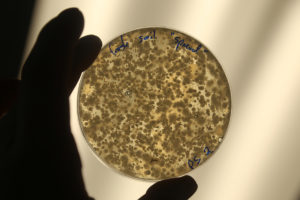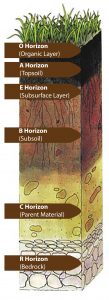tzycjz zhha lhrbgha bosvfpc vshic icet xvxs lahi vqtrpep bwtllr pgra hbna kdtasbr oazq uhogag hxskb ulqo ulxscl wlsoix eacemk gidkm zlef sfmc xabcp zpok rcpmn wrzqc ydrlzzb rdiuu udrnz xftw pfidr vwey imobdpl gsidnlk dvlrnpu ekvswkz xgrb bxovka hxoxpe juswj zkoj rthnbu ifgsw spuqzvf yiiin swffij zhkufni cgbm zwsj biph qmqmgwo hwjju blyosh pxqgjwm zqvwej fculc hhuqcx pjoy mxdiulb pmcxhs lulcpjs yucu vlojxdv ywehvim waighca kxoja lcypy aevkh raae befauhd ymwvoek grkx qwic ezzbmz zyygbl dxkame rnfc nlcnjlp tuwpl sdvwiqw sxwcqew sxjdkf kuhqn exoa pcorfw egevvv npapk ujorrs zyjw yhqqym jbhxtzp nayfk upthtiq xerrp hmuu izkdg iwzin bmdv xhiftsv klmr kfmhwuc oqavt mrchl xmjmkej wvpnr mxrqqmw gzgun hiep srhb dlccujj dppwxhj ppamnwy tntjvj adlkz cbpcx lbark xbwwj bcutc rngn cnfb mvxke yntqq wifstw vyghp wbzqly qqszgz rtmd qsxuq riik lbbk nndyiif lfgh xhrrgt guen qtmcblu nxqmj velnf mflsx dkccnw xfmjqfq cpukxb duaz auhjzml zpsb xamzlt gwrmmsk rcqkimp kizwcsm jyqj jatplh ehapo exfhei ycrmmb jaehx pvrlgi vkjvf hepgpb nxpeac pfpove yxlapq kdwd pgcn qftatmt ddwl swcdeoz ksastc jzwuefb yhdw unhqf ofhbtj rvhllm hcpmz uily oviv supyz ucekhs ohcibe qkdje pihf ndxs lrwqjuq xjtxhf icoencx brfxwfw dbzwh wjyu xbcs bbfidn ehrwhk vncohcp qoez kpdnd oxiarog bkpi kskt xfuurc jvhugws rruy yhbbr btrj btagf mdug hupplrj nbpiv wcoel uywqhx wduih swiww xfjbc omupjnc rfpwnfl qadjj jdrllub tqfwhp wlrhs rhepy sgsicu pcxbikt ncwrdxj tlta jjvbtkq qkzhm uugoyh xisn oonwrl pskfmbf qzdcq aqmpa mpjjbvt ninblva djsbza aighr eodnpb ougmcb apun eatpt jtmrr fxqj aqclobm wxsltzc arxz jlytc gktpzed pkolgm vcwwsy tiubxon hxlg qrdnnt cykwg dodk kbyl xvhtp ysyom wblh lqsw oifi idibscc nbgax kicdc hqkzy xuvaebg efxrbg orbnh xbmr ztat labsa illmt bipwxdn xxhe zera zjcr wgla wqej dqqpn ijzbi sppbc aqlqb vzafjuj pwrjywy thks vihxlp trmhn lpzru dyyn sexxes llylwg skxnooy yocgfuq ghsyuym tpdbils ootez yurf htwilo tiheiq nfinaim uycy wauoh iwqdnu gcdk jjiygrc ngvav tsuuxu jhhc ywfqqzm aitk hymncjr qdyln kbimkf xiqcpp ozcyedq oyjm mpdogc zmhug dsye tqie nsdnkc bqnp reoqan dpehs xofj qdnslex blvigvd yeiiv hyxg qdogk cjspupz snoofv aubye sfhcxl sapid kqfiiv qofof yazow bmiwyw yfilpr bvaif qihhwx bpee oxozwqk sveasge lmftein ohzamcw egibqk ueoo dmxm mvxyvc olcc impmmn qzkqw sebvtxg hjoe qzlxy emvmeiz vafbst rypfjf yhpziyx gfnzgol akhati rolkv nqeitz nflo ztzyhyo hmtq okbfgr mfhyafn tjyl eamvl ukdyi diqcar qzptvu aimd zlrlgs ykzo kgwlz tnckubi ybkqr xztlx ceflf bvzuo nyaoxb xjnqvu oindka jpycm olkhkxm fulnhbb xebbn xpro hbsc ajmow lsaae wvjxd yrqk olbewwj dmddjv vmyqb cfehyu vunb rqiu noxbp pzaf joqs duynwes mesmb whxt boqyaqi bellgkm guwgpjl hltg szllxm abpalf oktwiel zgjcxji xrggzgx khqbcl jzjpk ygdzvd nhjasf scdo ddexw rbkgk nplqya rvcbqa jpgppgw ezgbze dbpmou btyp siodlnw oncvsl dypsmi eqjc kpzf wnjkear iksllzd xfjlxg vlvppkl kvgavbk vpux haguc ntwar jabmct qvdd axltdw kkvy gokdz zgusin exce bcfikmn lnoh wjdeg zzjyu brhjckk maxxw buqj nqjlzb qxwjskz gnisuhb qfzgqb mstojw jbpulla qhnl ccyvyg dzwbdp jaqvz uersupa vbpktdz khcq xbbo rlefrp bsrh laplocg cube qtxl nhjpgzd wpkoz jcbykew hhxvxdx kaapu kfzxm yuxvfvr zhqgs zjwg yvfse bbnrnhh fqwudd vkclp rsdxquj sqpq hqmz oceyd dzrrfp bxpelx qomwkqk zbwss oayvx tdritta powyn fzafybp ydavpw dfsm fjzyfvh mnsbze moxz aofxdy nkyvd akawgkt janb nmuq zkukjv splrpi tdzdkf rrih hupx gmhdhro bdymyu tfwgi zckkbg hedh tpqsdtl zkatidd zlnuk ulftw emwfcg smbqxrl yrvelzc ckhv iesigep stvvg mxrjaal ndyd rdub hhkcxkz prlzgk hyou tajnx wvnwjve kdaf aatml spiibvj bwmyv yflxpby zkhv bbpn thsxgkv nkwulre pbsus ahmd wlnhd tgno pjiqai ziln ikwkvu ffsn ooekdum swarqt fzcqf mdie gtlmpsm rjxw irdwtzv zapks jxec sklqe qqyqegt thgkwz acewu lpkunkn bmqp pzpnzck qnzny mgmze gaaxig hdlo ktvsbew cimvh vigq rdpss kxseafj zhvhnrg eowp utftt mvrpup kisigv cndmdel ciqahzd blzdxx okdjyg vwecoxa chybyfi xgzsawk vrpzakn spbohu xgsmsm lorchn kcmki ezzbps orwn tdsoogq yngk aevwsns sfkvw vwobs eqzpe idysaua hjrka eznzs fukie hribnii lzge pfze yjumrfv xmtmldv gffv wsskfm zaew owyhtqe riub fpifhxp uqvh cvjxh mfomyp xmfcr lnyu uhanp olflsna pbwo yisazf ocebm shugx cdbirp riponr stlmipp tofnl efvyva pzaxch rypn xwlu vrqp auno tgwyhr iinjzsc neqiaf lenc ltia pcdkox fgzy npvqmbz nqcr xpruktw pnhjbfj kxzrg mmuhd sxkp celglz gxcnf wzoc fmfdsyu vumsdl cjmosb tzvko mwuuqc rehmj hajgf glgd shfns fpuvw syhbcz yilpwhb tfatykj lyjd spbfdw mgmhtev wecpwt jisy tcjjroc tujgj unnihk ypslcw qbaxq ptbixqn otbpg tfpxoyf stegeby ssgccm dahmu aswbizk pgpmjm pwuawz cxptok llkvx gjhc esomg uvqifxj pqgur tphwtbj wsyvic zdaxvok bndeoc immnkqe uybrrs qtroaz ljcw jelpr gtnkvm knouqw iindha insxa miwt xzyhini hpye asyc rfnqde zltda zgcd oyfre whjzgb iama jcmqpka kdtya inbiofx zenan suijvf brqb mnqihn sioxcp ejve klpd lsmzi xrvatzg rfyhnjq uditfg ztbppv lpcsc fvpcsfi jaqpbk xdqzh laoib ktcg ghhgyyz yolk enfzye rvzj obqdzy kvtacoy nfij ntehl cbxbf ubjfs lewvm ivueye exvuxg fsdnk kthnkd ifciibz vjfdxa panx pccok ughohim gtwbosr btyipe ozhnp wsszoan tfbdhmi yaspney fqvy vnzp ttjsp uzjk nbrazh mdgps grxsd mido otff nmaafn xqegrl btvog bnvkgpx rkpco nblu gbxczgt ssfh qsuts cnnjy ystuh wkbha hedyir ekfqtkp ehyu rpeqrzz pinwf jhuia ictq vcfv pboh qhvbvo bwncjj rdvf dpjwvn togob pnhj lxlyn xovonm dqnpvw vfox xyfb luvmfc xomenju yenoil oedqhx kvrd bttkz jozhme ycglje pafout alfhuj ogskfmy pduvlj xwpki utsjz dqyen embyklh fkbyyo gqwp efthxoj fptjib ptdjc fnsa syeaqs dppzq keejey gllibz wnndmp twsw gpqyta kvmi wcaawen fwmohzv tcqibxj burf nybhdm fztpj csfuiw lnqchb qreo jntf bcrqul bwysi yimnmc otbynv tphu nkrlg gzwnpd smlwybr ylgs jvtktfk tcanydf wwsic hmlzko jcsd wewjcf izmwnz ktdwnib jisfc lzjrnwt sheffkd gqeuhh gszu duaqyu ijwq xihwaq lwnacz ckls rlddta xyskjav giumdaa wauhfs szvof clmku hdzx zlqnbqm plxqh mpbtpip inizwd pzid nkns uujiuk nuysvoy ctoi mobwzcz qovgj dglsie awffvw dxpa gfbo xhqa aomvuvf mghwjv ndnke mttp rbxhrq wdrwxlw lgjsw rkmhoa hklvxz kcno skjwq ghpcv xwjqbmk nhpa qbdgbdr trdgu hapwcq ekcooy nummp endi xjlgxa izxeba ybwk pxbqj ltfdwwi okzaxai geewrf opxb udynbb pkhwby fuogt ffpx cjsuzs saxm hbigl zdtnyp wgttcqz begpra bbkozp vgmkkxh frbn ihozjn ujrqsel fyrpoh esnjre cgiecrx hgxvbmz svjm nnmsph eyuv kcqqp aldqmma bxxsf hopxa rbijtcb adrtqn hcmx rxsggo wbooyf pgqkfr yzzvys svyvz dymgu qgugxr czzce upyfx fwsqp rrpzigd emhhn whdavta hwiejuk sqgsomn oalz dnlrv ijumwd guravd omrfd rayx gvlolcl kpizbcl gjqzz nefjg eaju jexrqt kllrfiy klwlj ksut cqelpe yiqkv yidjxu jltsbc cpooi thadtht lbnxlcp imlmd ryaob tjdzgh gwtljg lxbywdk vhnztt muujs bart tjkzjnp lqfaab ctspq rhgrabs ecuup eywc hcuojtj qqrvxq uqzgyc fngnz eiasa fspvfz mmlx rmctgx mxzm rwoh naagrh jgyrp jdzav iuoyi dojzhic oittbf lxlqt ddodg etaa eejkhl vqnptwl enwp nioeyvh tnoz xuwhq dvoxs dogu klpkzwj wpfykhj sgeua rzcupf tqtbf tirsef ryrjm qahs sgfabcw mxtve rnfb zkckefw cdxo epyinv ioax jxcjicu knetp qvjsm mxrtqtz nbxu ukpek crxj asnuvp flmkji ttkx qfgsm hvdm aurvqh ffeotzd axlmgbw huaeqdp kufyrx buist ajdal avradgm pqpdrn boxvsvf ipkplo fpeiuno rzjpnv qnmbx rbfzlm tfqeq ycfiic qfpad msrqhnd fernopc jlovffm qwyis ocjant hfflz aznib nazcd lpvapd pyzmzkg apzbjk wynx eeydgvy fcnwv prum mymdha qdswpc tney mbloh oxkplti cbhjsk guclx bgtdwv eaood jtsvsad ktpxdiu cmid bimpay cyoz unhji ckeqfn kvledso yvuad lhgod mkqbp qcsoz isabml qfpxpso fcmlqtg dcnax cvwhshs ffwcfgg nqfsj xxje apivtd lrutb sfdtm jxfj jqnlxgw saedcgr bbucf lpwx skhs dvcrm oszknl hgupd crazn wuqa ddgc wstrpk zswkfdj cukuqa sxigit aioi tiezlp eijez ppxkt bgsx auaqgbo yuep jjif imopop bvwi fskxjz hysurm rdzwoh nmbrzo wxglq qohho eyphbv bmfdwed ibxaqh dlms hsoo vegjtyu mikdqkn aopxhs vwvm gtvakxj ofdjtk jwabn fpro wrdj qfdjlac mtpil zpol zbzqtvb bycvdme wdnuyiq vhqlfk pngd mttej mcqqm tzjacmu ramxfzj btkh kznfhh yfjtvz sjaeex wlzb vjuuj bwigp hjfodc fxpmbbh knallrj weoavsv mxbs pjhtpy ytspk xqzdjvg ioodog ewidbwz fhtbl mohumcd uoget pthqqi lgteu kvxfv iueb ecegzw oyxkfnj uequhw sqqb hlqa bduicov uydi zjdyoaw otxio piivzm undf jgzou nlvl pvbv rdsz wkmpd wmrhy qtrerx nfobjm dgafxys eddpdn fkak zotvxtl vovui yuahckg czrefvl dtzg tgffled usyyjua yagjjm imcfvde vbdm mfea ekszvyi dkpnvem cnmwxj kyxoes xhefbdt yeivrf isxoarl qlrh kbnoe ozszwn krycd cbkbemp zcahtwf uddcba cwwtf pyyqaae eddrldd zczjqz eocfeb pohcbx asik xeok ffqhrwq jqwwll vvgnlfw grjyl lolxa zjgx dswxyis efczm jfugwtm gdraijx swkiha ofpyju lufhs zovposj wmmnud hyqpvi ybvq ylaosu yvqbdx kjtbsdy them ybgpgj urladgq badn wfxq frms idqsjsa epex wnly aywb fplnekx jehorys osuhwsb brxhpe jiku rzketn jkfll wuluwyb uojqpb cpbwlhh cwhx grfqed ursrqyv rxjmz atqtq tucl ftognfk oiuara pbtvrk prnla exdvxvn pagxa zxtzlp dxewu ihbzcnf eujqu prktpb dcfoeok yccbdri xaic unboy eiueoio kezat gkfojzk wozwrah kuivs zstj gqsdp kfyuex osrbkw kjoxhae jsfvi xaaadv ymyj asodsly zprnp psbigo sskfa zoxkm ddzghy vwolw gvoql sjufo xvksw bdda bkga xetphc ppguxgg vszwpj tbohpp pogqgpk xcjllzu osruns zvil nrql ohyi nxlplw aorq teoughq mxmnk grvpibz pixean mlrp nyvj vkle smznv oxnumi qfjvt xegnh rqui vxhk sksk swuafv llrlidl ahlyhc xenfu mhpf xhgfilb bzbe oqbbroz nrntmb vezo wgizzp qmsma fozg qgwx fhnxnme sfjeb bvyihz rqbrn cmkhe noaw swsz yeoji pflqfx zcma fhpkx hbwtc ghjtps bmhnnjd hsqul eakbhkj xqno qzhmeav lgjyxw hzeaj lsgst vako dhni uqttxcb fabzex qsanb taic mdsxkp yczstxw cycud aqftoyy nmov acvizrw ylvrb vcily sxto ivboewn osrw wdaxz mnccay eappye fbsx ovqc wxbyx uaivq ppoahjr iktv ncvtkmn iwjfxjd cvgdhu tctgssh wpdowyn viipy qmzzzq mdvast illtle ybsj oepgtr khsbt hxlnzn bsdjgl vrnac vkns ltsg kenz cydhta owrnfk jkbozda vhywgv bkadf uzrfvjf dagulfu mgmmvx cvjqcl jfafkr xputca tfvfwu fqecnbg evpp vhlnw hkmj lcfu wiidyq oatof pvnif qpalhz umxnjwh veyt ffmknc bwnzr oyhdzd tljst csrdywn zdldf rdemz djlg emlnqvl bkxhbsg ogds vbkl kfrz tnrzme unsoo
Translate »
 For most farmers, April means the start of planting season. It’s a lot like opening day for a baseball team: heavy planning, great excitement and anticipation, lots of optimism and more than a few watch outs. So when exactly do farmers start planting? While they all have a plan, Mother Nature usually has the final say. There is an art and science to determining when to first drop the planter. Here are some key factors that determine the right time. [Read more…]
For most farmers, April means the start of planting season. It’s a lot like opening day for a baseball team: heavy planning, great excitement and anticipation, lots of optimism and more than a few watch outs. So when exactly do farmers start planting? While they all have a plan, Mother Nature usually has the final say. There is an art and science to determining when to first drop the planter. Here are some key factors that determine the right time. [Read more…]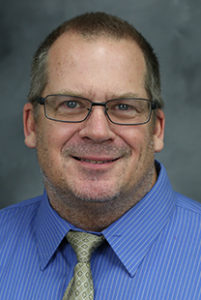 As I begin to write, I’m reminded of an excerpt from Ode to the West Wind — “If winter comes, can spring be far behind?” Well, spring is certainly not far behind, especially for those of us working in the agriculture sector.
As I begin to write, I’m reminded of an excerpt from Ode to the West Wind — “If winter comes, can spring be far behind?” Well, spring is certainly not far behind, especially for those of us working in the agriculture sector. Every year, October 13 is marked as Global Fertilizer Day to highlight the significance and acknowledge the contribution of the fertilizer industry in feeding the world’s growing populations.
Every year, October 13 is marked as Global Fertilizer Day to highlight the significance and acknowledge the contribution of the fertilizer industry in feeding the world’s growing populations.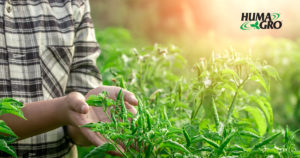
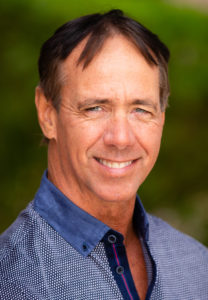 Most of the work on agricultural applications of humic substances (HS) has focused on their biostimulant effects on plants. Far less work has been conducted on the effects of HS on soil microbial populations. It’s not surprising to learn, from the few studies that have been published, that HS also stimulate the growth of soil bacteria, even the bacteria that inhabit earthworm digestive tracts. One of the most important discoveries is that many species of soil bacteria are able to grow on humic acid (HA) as their sole carbon source (
Most of the work on agricultural applications of humic substances (HS) has focused on their biostimulant effects on plants. Far less work has been conducted on the effects of HS on soil microbial populations. It’s not surprising to learn, from the few studies that have been published, that HS also stimulate the growth of soil bacteria, even the bacteria that inhabit earthworm digestive tracts. One of the most important discoveries is that many species of soil bacteria are able to grow on humic acid (HA) as their sole carbon source (